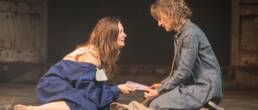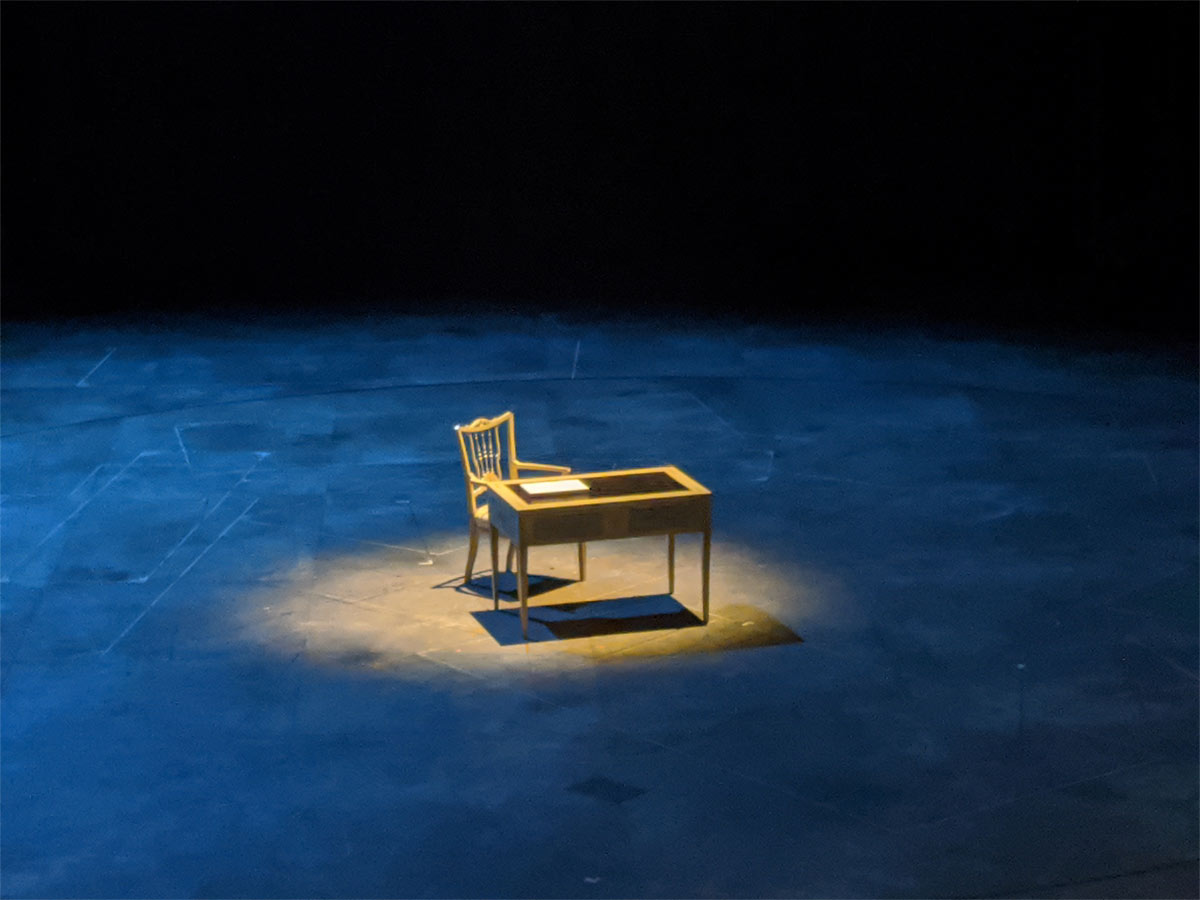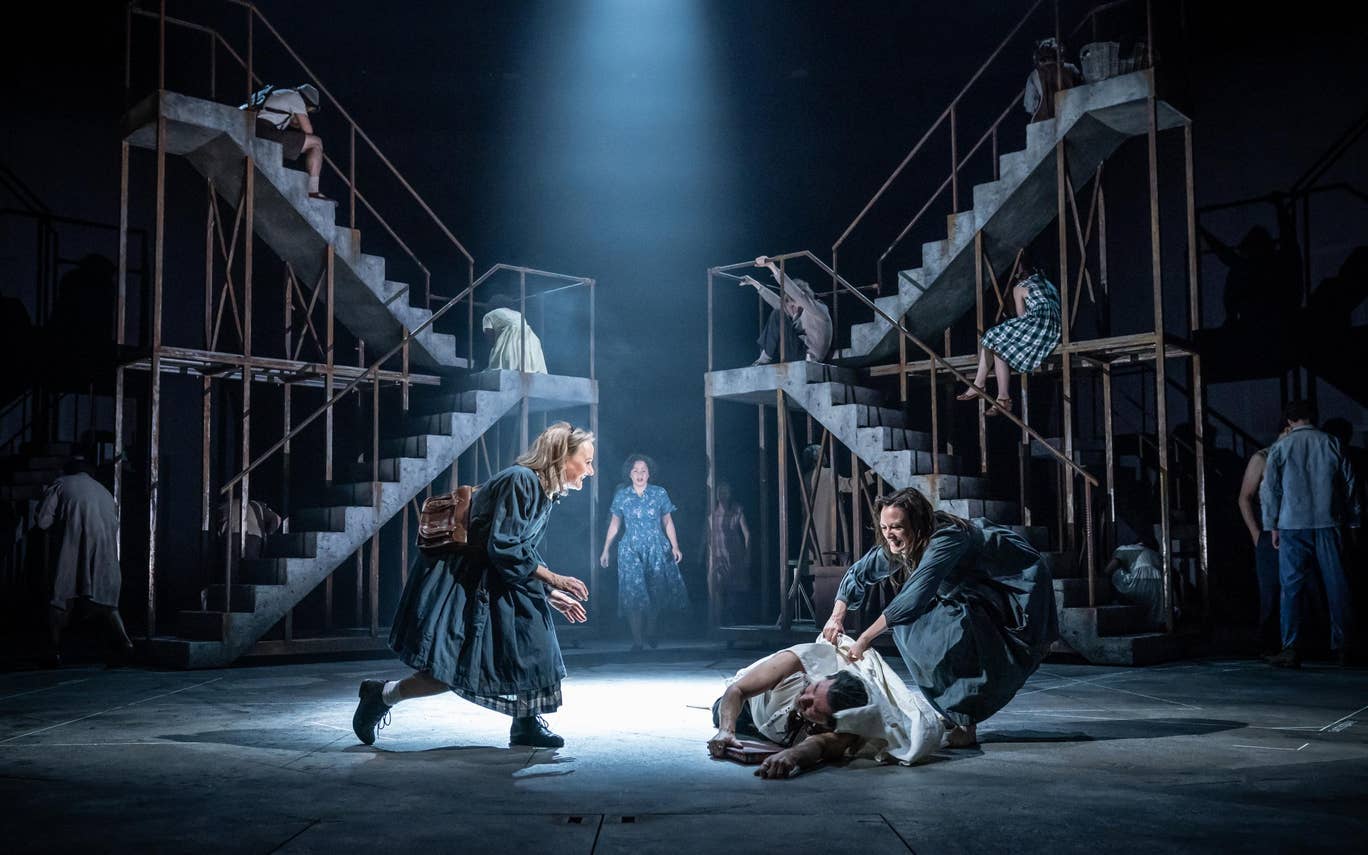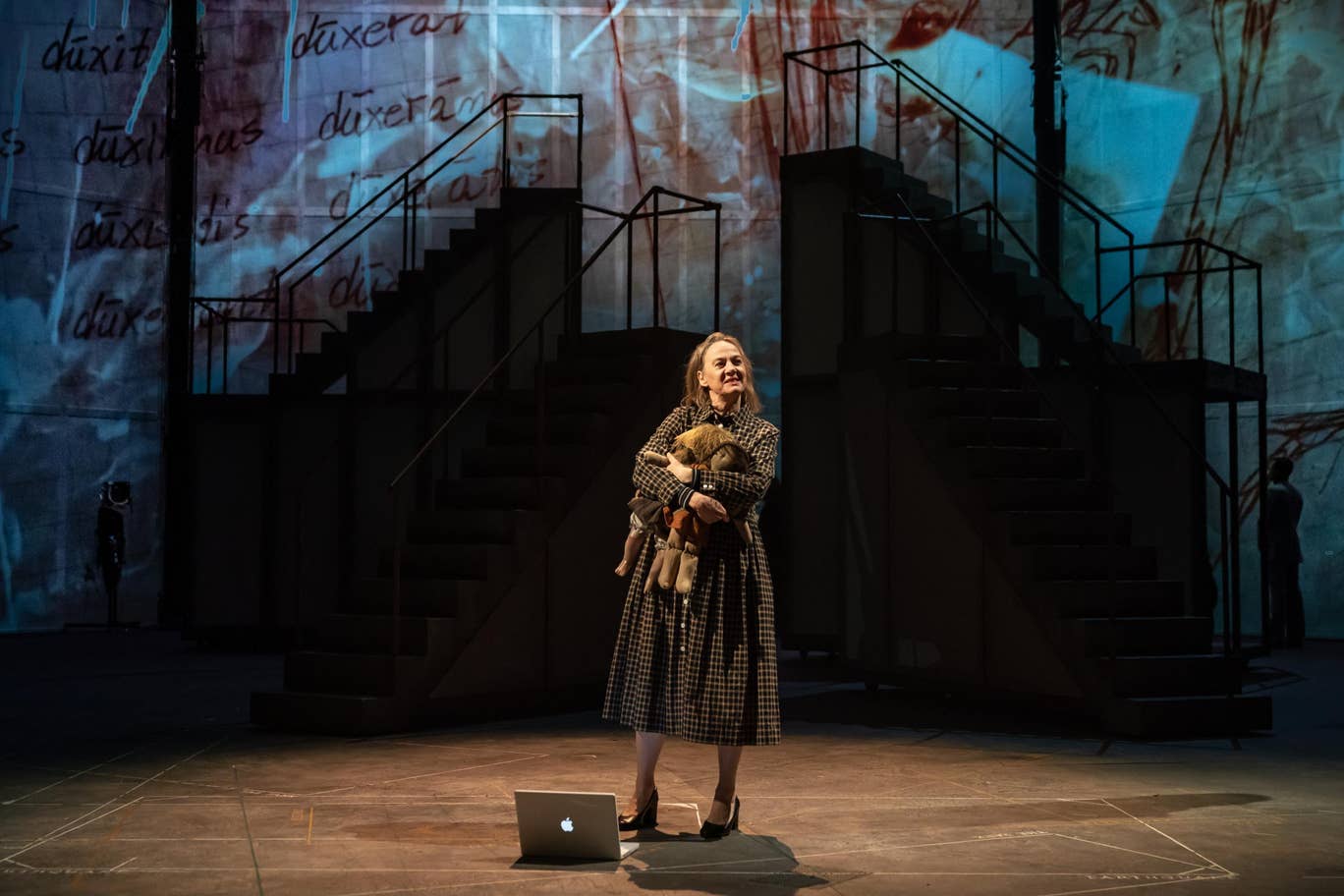
There is a pile of books on my desk from the to-read list. Four of them have been there for a while. They are Elena Ferrante‘s ‘Neapolitan Novels’, a four-part saga that tells a story of a complicated relationship between two friends from their childhood to old age. Two friends, different like reason and emotions, but like reason and emotions strongly bound to one another. Their story would have remained forever unknown to me – four volumes look much more frightening than one – if it wasn’t for the play brought by April De Angelis to the National Theatre.
 ©DIANA DWIGHT
©DIANA DWIGHT
The first scene opens with a lonely chair and a desk in the middle of the stage. A chair for a person who stopped running and took some time to sit still and think or even to be interrogated.
Old Lenù, one of the two friends played by Niamh Cusack (‘Too Good to be True’) receives an unexpected parcel that makes her recall events of the past. There was a lot of suffering and violence in her post-war childhood in Naples, but life is never black and white, as tragedy and comedy often walk side by side. This is where humour, dance and songs find their place and bring a little bit of colour and sparkle into reality. These ups and downs of life are masterly echoed by staircases, the only stage setting of the play apart from the videos and visual effects projected on the wall.
 ©MARK BRENNER
©MARK BRENNER
Lenù meets her friend for life, Lila, played by Catherine McCormack (‘Braveheart’, ‘Dangerous Beauty’) when they are still little and play with dolls. Playing with dolls continues through the whole story: some of the characters are impersonated by puppets, two chairs can easily become a car or a plane. The symbolic language of theatre also allowed grown-ups to play babies, or the same actors to appear from time to time as different characters (that I found a little bit confusing). Some scenes are extremely imaginative and Lila’s wedding will please many fans of Game of Thrones.
 ©MARK BRENNER
©MARK BRENNER
Both Niamh Cusack and Catherine McCormack carry the major weight of the story and are absolutely authentic both as little girls and as elderly people.
The production is divided into two parts, two and a half hours each. As it has to cover all four books and the period of about 60 years, it manages to highlight the main themes and the key events of the novels. But I feel that a lot of the story has been left aside. The play made me wish to discover more about its characters.
‘Neapolitan Novels’ in my to-read pile, I am on my way!
My Brilliant Friend is at the National Theatre, London, until 22 February.
Diana Dwight
Diana is a freelance writer for The Cinematic Journal. She is a theatre buff, a cinema addict and manages an e-community of smooth jazz lovers.
Black Spot: What Makes It Tick?
Over the past ten years or so, there has been a resurgence of crime and mystery dramas.…
‘Pet Sematary’ Makes One Too Many Promises
The trouble with Stephen King’s literary works is that, although they’re superb and masterfully…
With ‘Us’, Jordan Peele Delivers
Following his extraordinary debut, ‘Get Out’ (2017), which earned him an Academy Award for Best…
Don't miss out
Cinematic stories delivered straight to your inbox.
Ridiculously Effective PR & Marketing
Wolkh is a full-service creative agency specialising in PR, Marketing and Branding for Film, TV, Interactive Entertainment and Performing Arts.


